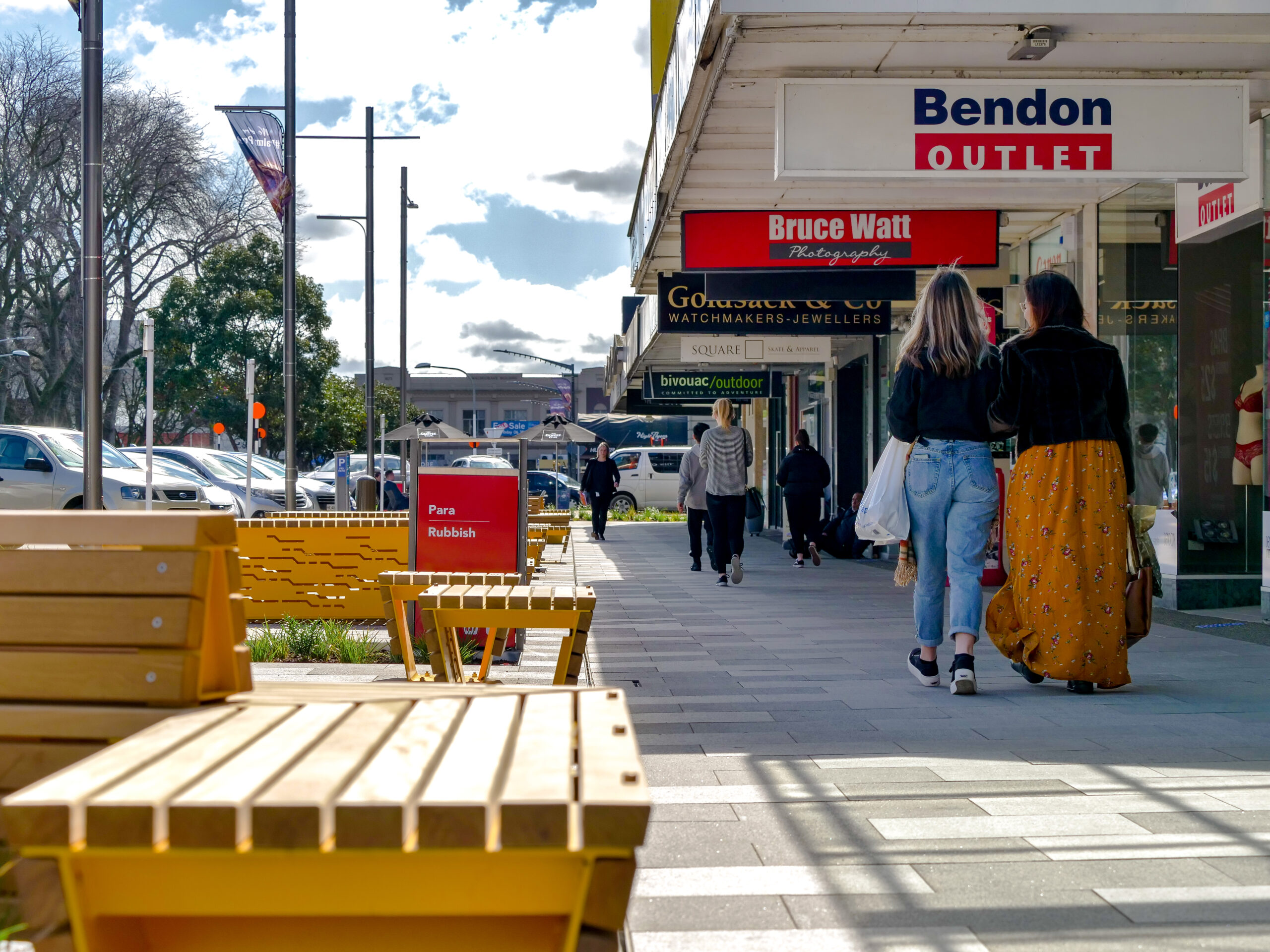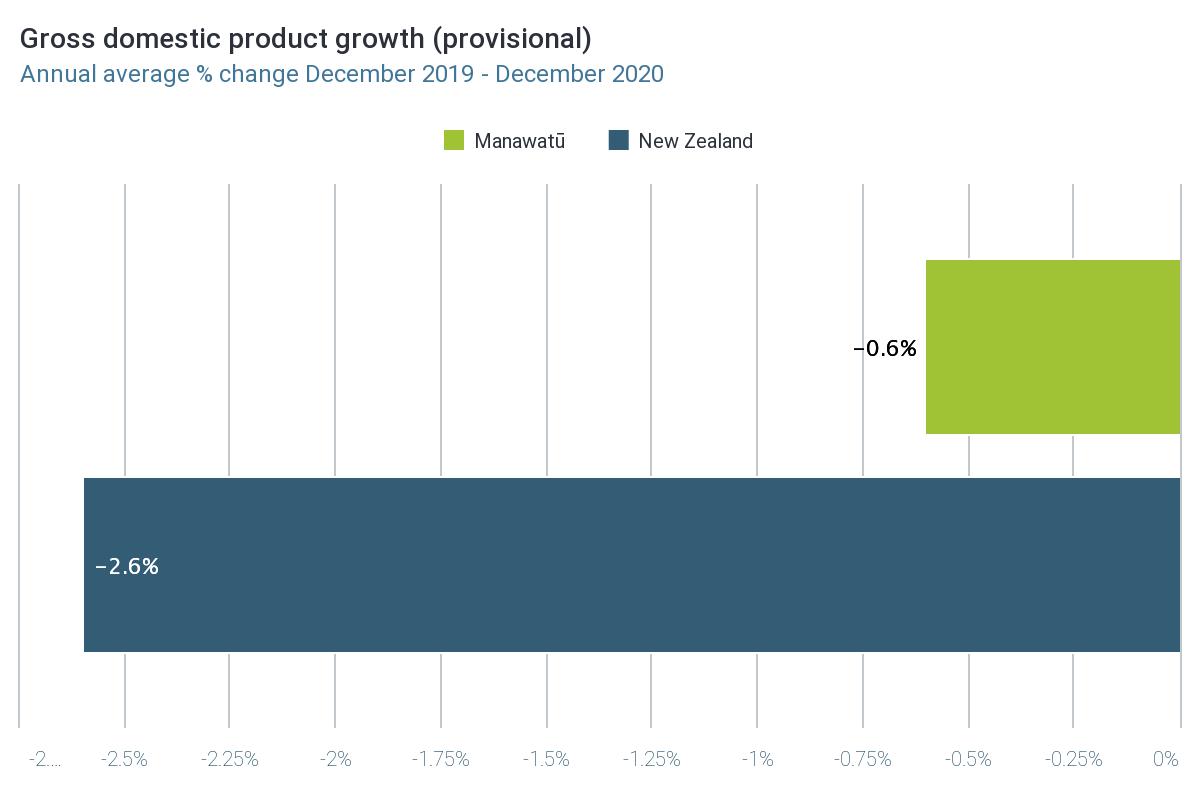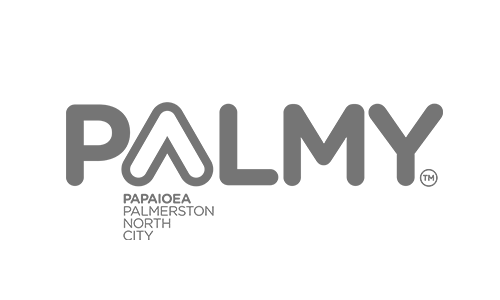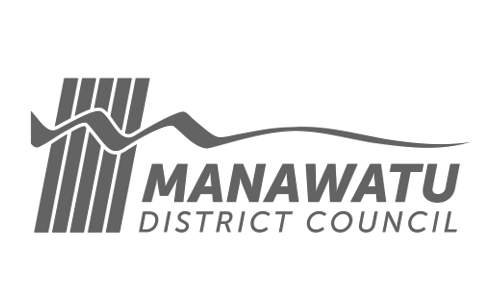New Zealand’s economic activity continues to follow a more optimistic route in the December quarter, and remains resilient in the face of the COVID-19 pandemic. Aotearoa has been fortunate to have less restrictions compared to the rest of the world, and we’re starting to see the economic and social activity advantages of this coming into 2021.
Apart from the spiralling housing market and challenges regional economies with a strong international tourism focus still face, economic indicators generally project a steady path ahead for the coming year.
Regional Economic Activity
Infometrics indicate that the Manawatū’s economy continues to recover and build from the effects of the COVID-19 pandemic with growth seen in both quarters in the second half of 2020. The region’s Gross Domestic Product (GDP) declined by only 0.6% in the December 2020 year compared with a 2.6% fall nationwide, reflecting the drop in economic activity in the March to May lock-down period last year.
The provisional GDP was $6,500 million in the Manawatū region ($5,215 million in Palmerston North city and $1,285 million in Manawatū District) for the year to December 2020 (2020 prices).
Manawatū’s diversified and unique economy has kept the region strong through the turmoil of the past 12 months. Our significant public sector workforce, including education, defence, agrifood and health, as well as a strong logistics and manufacturing sector have meant the impacts of COVID-19 have not been as severe.
Regions with a strong food-based primary industry, such as Manawatū, continue to perform well in the export markets as more overseas markets are attracted to New Zealand’s high quality food produce and excellent food hygiene standards.
Consumer Spending
Retail card spending in Palmerston North in the December quarter was $353 million with an increased spending of 6.0% on the same quarter in 2019, well above the national growth of 1.2%, a major win for the region in the current climate.
Annual electronic card retail spending in Palmerston North for the year ended December 2020 was $1,180 million, a decline of 2.3% from 2019. This compares with a decline of 3.2% for New Zealand. Retail prices increased by 0.1% in the year to December 2020, despite a decline of 13.1% in fuel prices.
Manawatū District Council Economist, Stacey Bell says: “The year 2020 was a tough year for many businesses but by December the year ended on a high note.”
According to the Marketview retail report for January 2021, residents across our city and district conducted 77.2% of their retail spending in the region, compared to New Zealand who spent 66.2% with their local merchants. The high loyalty rate reflects the strength of the retail offering in Palmerston North, meaning locals do not need to travel to larger centres, like Wellington to get what they need.
“In fact, Wellingtonians spend more here in Palmerston North, than our residents spend in their city – making them a fantastic neighbour to have and reinforces why the capital is our largest domestic visitor market” says Janet Reynolds, Marketing and Communications Manager, CEDA.
The highest week for total weekly spending was the week ending 20 December 2020 and the fastest growing categories for all cardholders were appliances.
“Retail spending in the city and region was boosted by the ‘Choose Manawatū’ initiative to drive local consumers to spend, shop and support local, and through the extensive visitor campaign ‘Anything but Square’ which was live over spring and summer, helping to drive our key visitor markets to the region,” Reynolds elaborates.
Unemployment Rate in Manawatū
The annual average unemployment rate in Manawatū was 4.1% in December 2020, down from 4.9% the previous year, and lower than the 4.6% for the rest of Aotearoa in the December quarter.
The COVID-19 pandemic affected the tourism industry and activity globally and in New Zealand. A reduction in tourism activity saw lower employment in related industries including accommodation and food services, but the significant increase in construction, health, and public sector roles have helped outweigh these losses. The main growth has come from Defence Force consolidation in the region from Waiouru and Burnham, along with the relocation of personnel from Whenuapai.
The Governments wage subsidy helped most businesses avoid needing to lay off staff during the lock-down period. Job numbers have continued to rise in the region, with annual growth of 1.0% in the June quarter (from the previous year) and 4.6% growth in the September quarter.
Jobs data for the Manawatū-Whanganui region shows young people in the region have fared better than the national trend. The number of 15–19-year-olds in December in work was 0.3% up from December 2019 (national decline of 3.5%), while the number of 20 – 24-year-olds increased by 1.1% (national decline of 1.7%).










